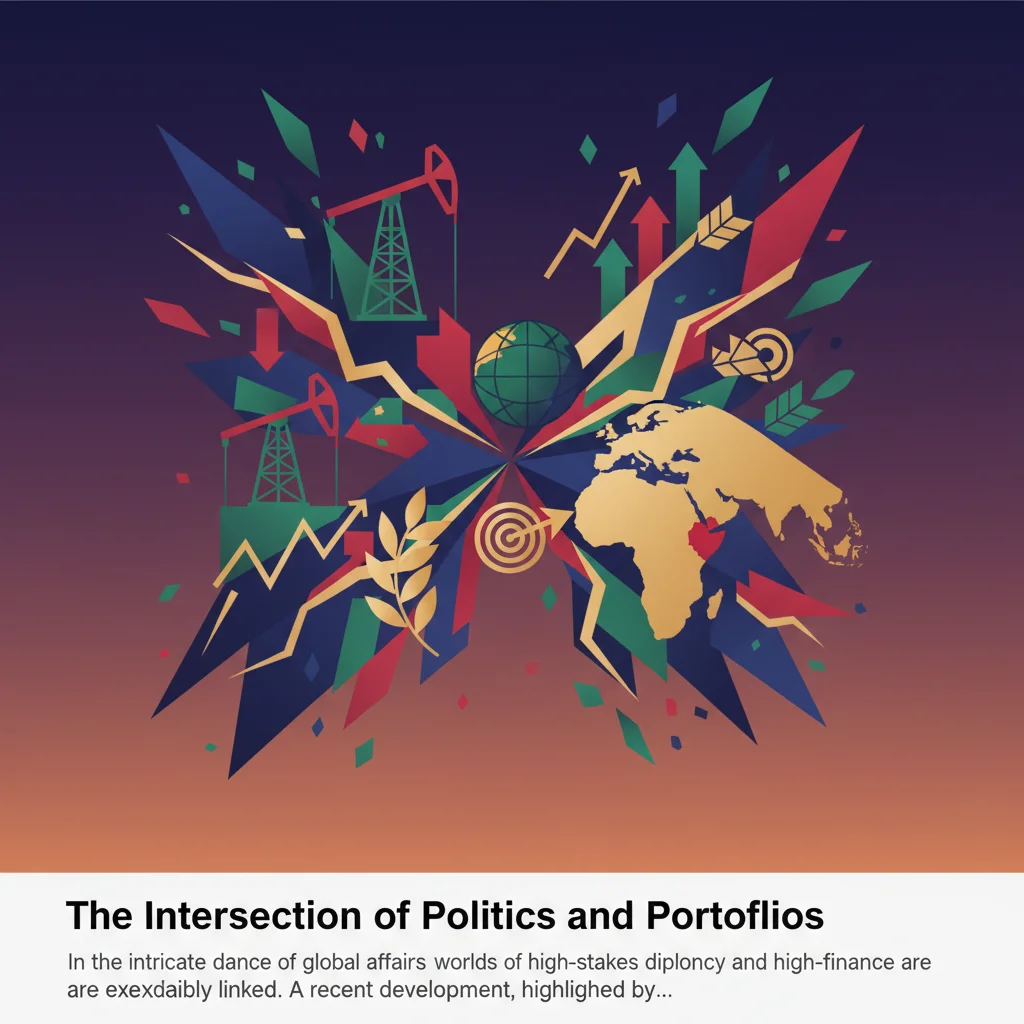
Geopolitical Tremors: Analyzing the Market Impact of High-Stakes Diplomacy in the Middle East
The Intersection of Politics and Portfolios
In the intricate dance of global affairs, the worlds of high-stakes diplomacy and high-finance are inextricably linked. A recent development, highlighted by a Financial Times report, sees former US President Donald Trump traveling to Israel amidst a fragile, anxiously awaited hostage release agreement. While the headlines focus on the political and human drama, seasoned investors and business leaders know that such events send powerful shockwaves through the global economy. Understanding these ripples is not merely an academic exercise; it is a critical component of strategic financial planning and risk management in today’s interconnected world.
The core event—a deal for Hamas to free Israeli captives in exchange for Palestinian prisoners—represents a potential de-escalation in a conflict that has captured global attention. However, the involvement of a high-profile political figure like Trump adds a layer of complexity and uncertainty. For the financial markets, uncertainty is a primary driver of volatility. This blog post will dissect the situation beyond the headlines, exploring the tangible impacts on the stock market, energy prices, and the broader principles of geopolitical investing.
Deconstructing the Immediate Financial Reaction
When geopolitical tensions flare in the Middle East, financial markets react with a predictable, almost reflexive, pattern. The primary vectors of this reaction are energy prices, safe-haven assets, and equity market volatility. The region’s critical role in global energy supply means any perceived threat to stability immediately impacts the price of oil.
Historically, conflicts in the Middle East have led to significant spikes in crude oil prices, which in turn fuels inflation, increases business costs, and can dampen consumer spending. According to analysis from the World Bank, a “large disruption” scenario in the region could drive oil prices up by as much as 75%. While the current situation has not yet caused a disruption of that magnitude, the market’s sensitivity remains acute. Traders and algorithmic trading systems are on high alert, pricing in a risk premium that reflects the potential for escalation. This premium directly affects everything from the cost of gasoline to the price of airline tickets and manufactured goods.
Simultaneously, investors often flee to “safe-haven” assets. These are investments that are expected to retain or increase in value during times of market turbulence. The classic safe havens include:
- Gold: Often seen as a store of value outside of any single government’s control.
- The US Dollar: As the world’s primary reserve currency, it benefits from a “flight to safety.”
- Government Bonds: Particularly U.S. Treasuries, which are considered among the safest investments in the world.
The delicate progress of a hostage deal may temporarily soothe market nerves, but the underlying volatility remains, ready to resurface with the next headline. For finance professionals, this environment necessitates a renewed focus on hedging strategies and portfolio diversification.
A Historical Lens on Market Reactions
To better understand potential outcomes, we can look at how key financial indicators have reacted to past geopolitical crises in the region. The following table provides a simplified overview of market performance in the month following major events, illustrating the typical flight to safety and energy price shocks.
| Geopolitical Event | Brent Crude Oil (Approx. 30-Day Change) | Gold Price (Approx. 30-Day Change) | S&P 500 (Approx. 30-Day Change) |
|---|---|---|---|
| Yom Kippur War (Oct 1973) | +70% (Embargo effect) | +8% | -17% |
| First Gulf War (Aug 1990) | +55% | +12% | -10% |
| Arab Spring Begins (Dec 2010) | +15% | +5% | +2% |
| Start of Israel-Hamas Conflict (Oct 2023) | +8% (source) | +7% | -2% |
Note: Data is illustrative of general market trends and not exact trading figures. Performance can vary significantly based on a multitude of concurrent economic factors.


